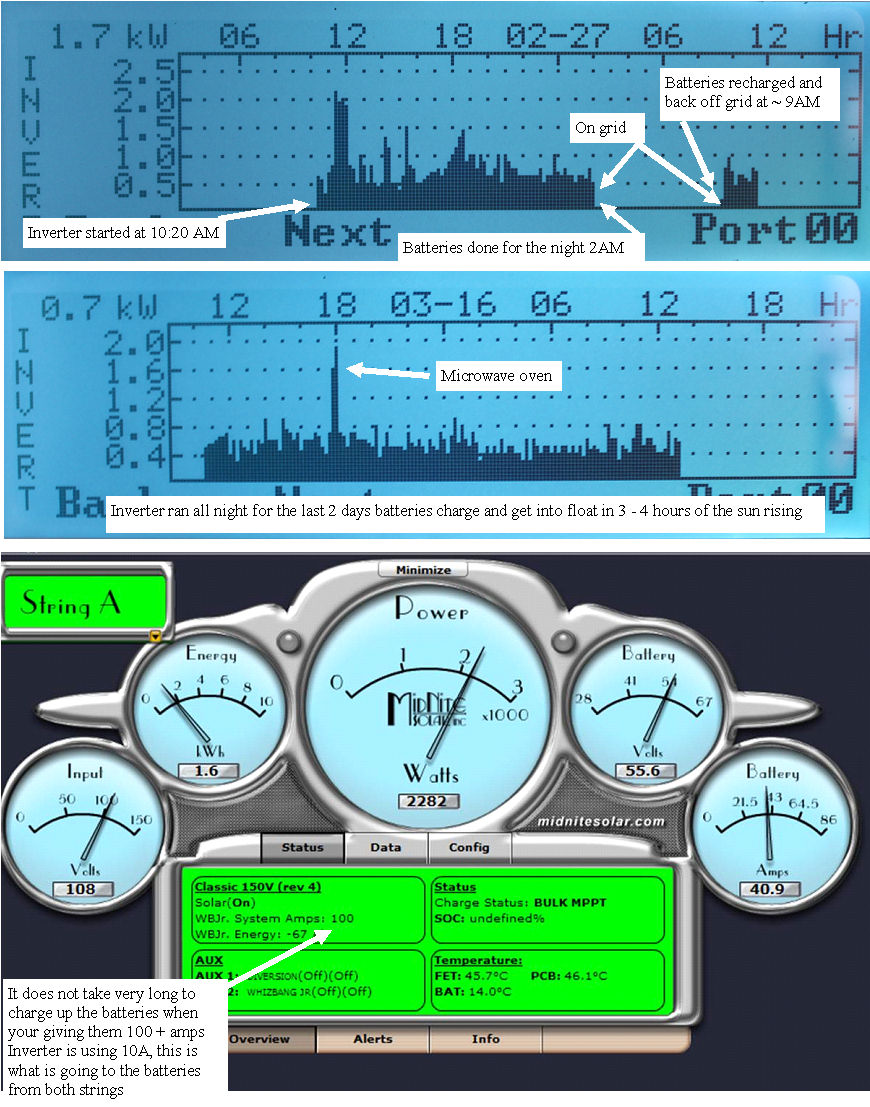running off grid all day
|
 | |
|
Runing all day on solar
|
This time of year, the days get longer, the nights are shorter, so the total time where the battery's need to power the house is just at the point where the system stays on inverter power all night, and with the huge solar array, the batteries are fully recharged by 10AM.
Nice to see the batteries make it all night.
During the day, a lot of watts are not being used, so the next stage of the project is to move the big loads to the inverter, with a way to only allow operation when the power can be replenished by the sun in real time. To allow off grid operation overnight, we don't want the 4kW water heater or 4500W electric range to operate then.
The plan is to use high power Solid State relays to enable or disable these big loads, based on the power available. The hot water heater is a load that has inherent built in storage, so does the air compressor, so when no one else needs high power during the day, we can dump heat into the tank, and the temperature will stay hot all night.
The range is a bit more tricky, as the inverter will be overloaded if both the range and the water heater are on at the same time, so the plan is to design a load management system that will divert the daytime excess energy to the hot water tank, compressed air, until they are fully charged, and to turn off those loads if the electric range or the welder need power, and to switch the electric range to the grid if Sue wants to cook after the sun goes down.I am finding out that the outback inverter data logging and monitoring system is not very powerful, unless you buy more components. You cant control the inverter or change settings without the MATE3 controller, the MATE 3 does not include a USB output unless you buy a USB card that plugs into it. They sell the card that uses a microchip USB processor for $75, which is using $3 worth of components.
Then you find that the battery monitoring requires a Flexnet DC computer ($275) and additional shunt ($25) to give you the net Amp hours in and out so you can better understand your battery condition. Then you find that to use the Mate3 and the flexnet dc computers, you need a custom network router for another $150, when a better design could have given you all of this in the inverter and Mate3.
Well at this point, I don't have a lot of options, and with those components, I can write a labview data logger and control program that will tie together all the Misc parts. Why is it never easy!
|
|